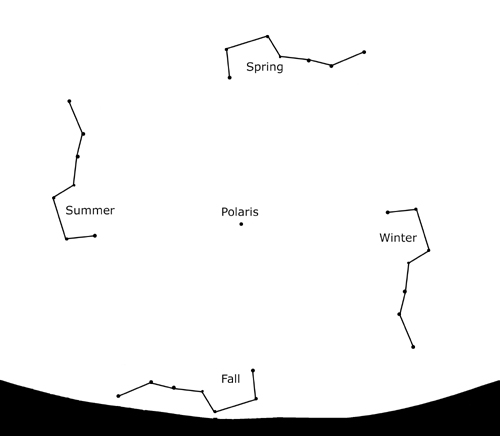The Big Dipper is actually just part of a bigger constellation called Ursa Major, or the Great Bear. In Greek mythology, the god Zeus had fallen in love with the maiden Callisto, and got her pregnant. When the child was born, as revenge, Zeus' wife Hera turned Callisto into a bear. Callisto wandered the forest for years in bear form, until a chance meeting with her son, Arcas, who raised his spear to strike at the bear. Zeus stepped in and sent them up to the heavens -- Callisto as the Great Bear and Arcas as Bootes the Herdsman (or Ursa Minor -- the Little Bear -- depending on the story!).
Hera was not pleased by this, however, and conspired with the gods of the sea so that the Bear could never swim in the ocean; this is why Ursa Major never sets (at least as seen in the northern hemisphere, from Greece-- or Cleveland).
Things to remember:
- The Big Dipper is circumpolar, so it is visible year round. But it is highest in the sky in Spring.
- The pointer stars in the bowl of the Big Dipper always point to Polaris, the North Star.
- Mizar is an optical double star -- try it!
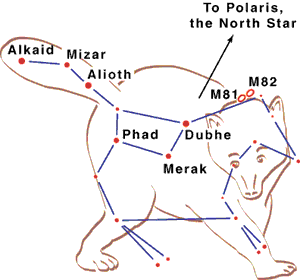
Leo is the Nemean Lion killed by the Hercules
The bright star Regulus is known as the heart of the Lion, and is actually a quadruple star.

Bootes (BOO-oh-tees) the Herdsman is a very faint constellation and hard to see. But it houses one of the brightest stars in the sky, Arcturus. Arcturus is a red giant star -- another of the big red stars that typifies the end of the life of a star like our Sun.
Remember how to find Arcturus: Find the handle of the Big Dipper and follow its arc to Arcturus...
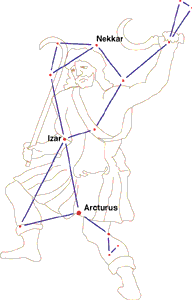
Like Bootes, Virgo is a faint constellation with one bright star: Spica (SPIKE-a). Virgo (the Virgin) has been claimed to represent just about every female mythological figure, depending on the story.
Spica is a young, hot, bluish-white star, more massive and much more luminous than the Sun.
Remember how to find Spica: Find the handle of the Big Dipper and follow its arc to Arcturus... and then drive a spike to Spica.
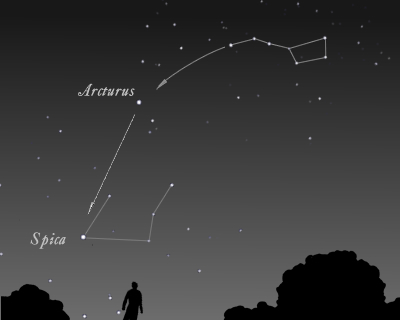
In Spring 2017, Jupiter shines brightly in the southern sky around midnight.
At sunrise, Saturn is dimly visible in the southern sky, while Jupiter sets to the west and Venus rises to the east.
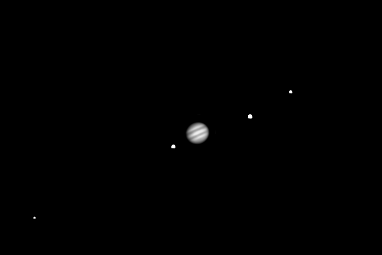
(Jupiter as seen with a small
telescope)
